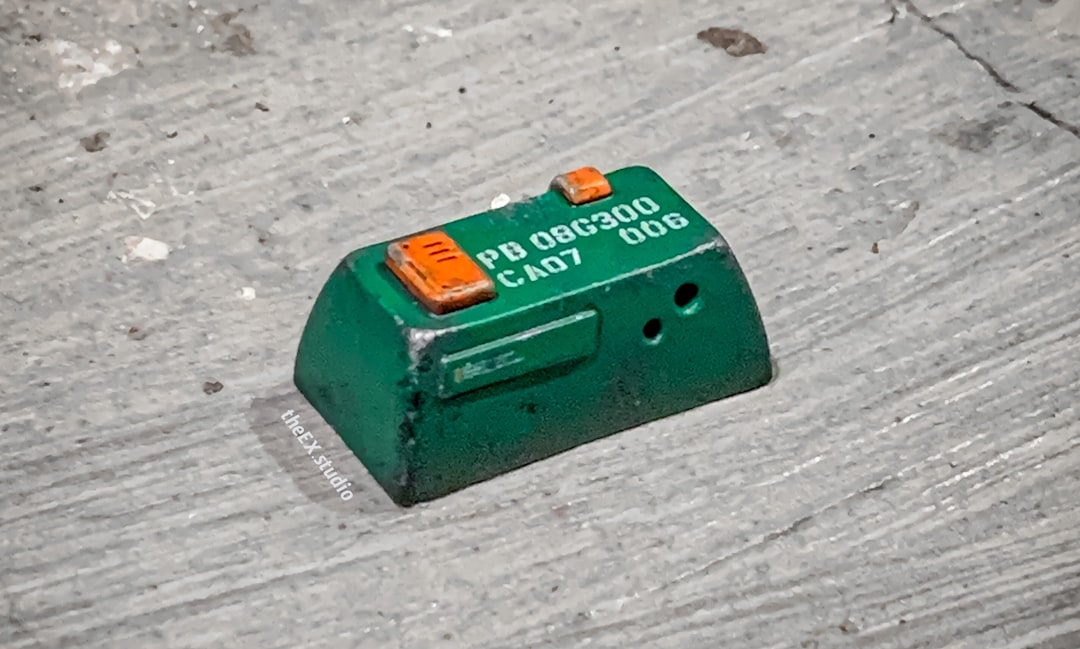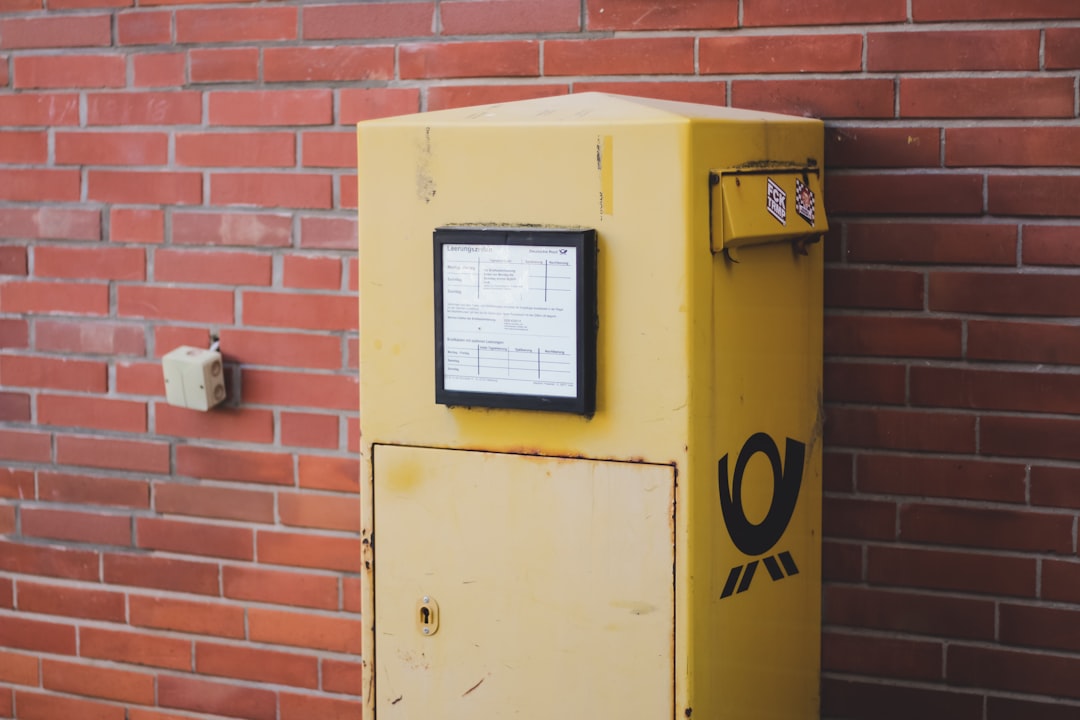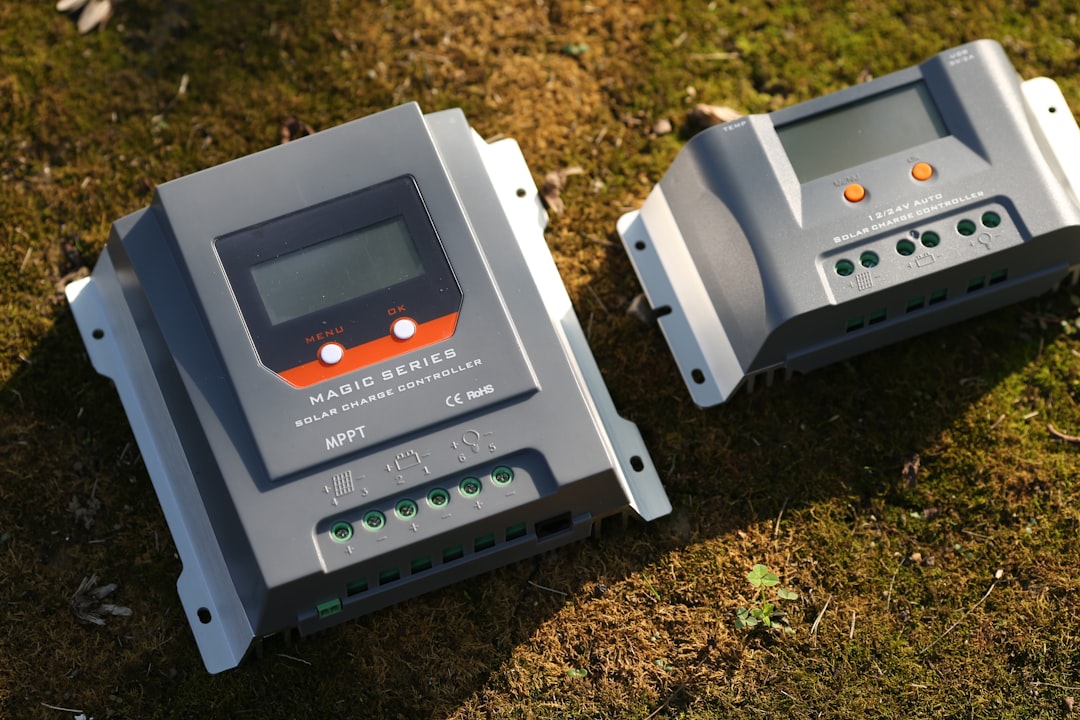

Engage prospects with a scan and streamline customer engagement with FREE QR code marketing tools by Sona – no strings attached!
Create a Free QR CodeFree consultation

No commitment

Engage prospects with a scan and streamline customer engagement with FREE QR code marketing tools by Sona – no strings attached!
Create a Free QR CodeFree consultation

No commitment
Meter repair services increasingly struggle with a double-edged challenge: ever-rising expectations for speed and transparency, yet continued reliance on paper forms, manual entry, and hard-to-verify site visits. The consequence of missing critical service updates or having gaps in customer communication is more than internal inefficiency; it routinely leads to lost opportunities, delayed invoicing, frustrated customers, and readiness gaps for compliance audits. In environments where missing or incomplete data can mean the difference between a resolved issue and an escalating service call, the stakes are high.
Compounding this friction, many high-value prospects including commercial customers can research providers, review service options, or compare meter repair costs without ever leaving a trace in traditional CRMs. These invisible interactions mean that meter repair companies often overlook silent but interested buyers, missing out on timely engagement and potential revenue.
The move to QR codes is closing these gaps in surprising ways. QR technology enables field teams to bridge offline visits with digital capture, giving instant access to asset history, repair status, and direct communication, all without extra app downloads or complicated IT changes. By placing QR codes directly on meters, parts, and paperwork, companies can track engagement, authenticate onsite actions, collect real-time feedback, and surface opportunities before competitors do. This article explores how QR code adoption helps meter repair services overcome costly inefficiencies, illuminate silent sales opportunities, and build a more connected, data-driven operation.

Meter repair companies often find that analog processes like paper service tickets, handwritten meter readings, or manual sign-offs create critical visibility gaps. These outdated workflows not only delay billing and follow-up, they also make it difficult to verify field work or reconstruct an accurate audit trail. QR codes replace these analog moments with digital checkpoints that capture data instantly, update records in real time, and put critical information at the technician’s fingertips.
By integrating QR codes across meters, job tickets, inspection labels, and invoices, every touchpoint can become a source of actionable data. The result is a smoother end-to-end experience for customers and a faster, more accurate handoff between field and office. Tactically, this means:
Modern QR management platforms like Sona QR make these transitions straightforward. Dynamic links route to mobile-friendly forms and records, CRM integrations capture identities and intent, and analytics show which placements trigger the highest-value actions. Outdated steps like manual data entry, printed brochures, and separate email follow-ups can be consolidated into one scan that updates systems and kicks off automated workflows.
This guide is designed for operations leaders, service managers, and growth-focused owners who want to replace patchwork processes with a predictable, measurable, and customer-friendly model. With Sona QR, you can plan, deploy, and optimize your QR strategy without disrupting your existing tool stack.

For most meter repair providers, there is a stubborn disconnect between onsite service activity and back-office systems. Technicians record details on paper, track photos on personal devices, or bring forms back to the office for manual input. When critical lead or service information stays siloed, companies struggle to maintain visibility into who engaged, what actions were taken, and when follow-up should occur. Valuable leads remain anonymous for too long, which means outreach often happens late or not at all.
QR codes resolve this gap by capturing intent at the moment it appears. A single scan can open a scheduling form, launch a troubleshooting guide, or verify a meter’s identity against the company’s database. Dynamic QR codes amplify this value because the destination can be updated centrally without reprinting labels or signs. If a process changes, compliance documents are updated, or a new video guide becomes available, the QR on the meter faceplate can point to the latest resource immediately.
Trackability is another crucial advantage. Static printed materials like work orders, stickers, or door hangers rarely indicate what happened next. QR codes reveal who scanned and when, what channel they came from, and what device they used. When connected to a platform like Sona QR, businesses can attribute scans to specific campaigns, map scan-to-booking conversion rates, and alert sales or service teams to high-intent activity. For meter repair teams focused on commercial accounts, this visibility helps them prioritize accounts that repeatedly engage with advanced features or maintenance plans.
Finally, QR codes are fast and cost-effective to deploy. Placing codes on appointment cards, service tags, inspection labels, utility bills, and equipment cases requires little upfront investment, yet significantly improves customer experience and operational accuracy. Customers do not need an app to access a repair portal or service status, per QR usability guidelines. Technicians do not need to search email threads for the latest documentation. One scan moves everyone forward.
QR codes are versatile. The right format depends on the action you want the scanner to take and the context where the code appears. For meter repair services, several formats stand out as especially useful:
Among these, web links and SMS or email triggers typically deliver the broadest value in meter repair because they streamline core workflows. Use vCards for account-based relationships, Wi-Fi access for smart meter deployments, and app downloads when a full portal experience is required.
Deciding between static and dynamic codes matters. Static codes work for evergreen assets like safety manuals or general contact pages. Dynamic codes are essential for assets that change over time such as compliance documents, seasonal offers, updated SOPs, or temporary outage instructions. With Sona QR, dynamic codes can be updated centrally and routed to different destinations by audience, time of day, or location.

Growth in meter repair hinges on understanding where interest and intent surface before a person becomes an official lead in your system. Many of these signals show up in the physical world: on a meter that is acting up, on a utility bill that prompts a question, or on a door tag left after an attempted visit. QR codes convert these moments into trackable digital actions that funnel into your CRM.
Strategically placing QR codes on high-visibility surfaces expands your line of sight. For example, unique codes on service tags can identify which assets are generating the most follow-up. Door hangers can include a code to reschedule service or request a quote. Utility bills can include a direct link to report issues or request inspections. Equipment rooms, warehouses, and vehicle dashboards can feature internal QR codes that streamline tool tracking and maintenance logs, reducing lost assets and downtime.
Consider the following growth-minded placements:
Connecting these offline triggers to your CRM turns every scan into an insight. You can see where interest is building geographically, which messages resonate, and which accounts are warming up prior to formal contact.

Asset authentication: Technicians often encounter meters with incomplete records or questionable serial markings. Scanning a QR on the meter or service seal can instantly verify identity, pull historical logs, and display certifications. The outcome is faster, more accurate diagnosis with fewer repeated site visits.
Customer self-service requests: Phone lines and email inboxes can bottleneck when issues spike. QR codes on meters, invoices, or door tags let customers submit a repair request, upload photos, or check troubleshooting steps in seconds. The outcome is lower call volume, richer context for dispatchers, and faster time to resolution.
Field-to-CRM data sync: Valuable engagement indicators often vanish when notes are handwritten or stored in personal notebooks. QR-enabled forms let technicians log issues, note recommended upgrades, or flag safety concerns that sync to the CRM automatically. The outcome is cleaner data, better sales visibility, and fewer missed upsell opportunities.
Beyond these core use cases, QR codes can enable additional workflows. For commercial accounts, a QR on a control panel can route to a secure portal with asset-level SLAs and service history. For residential customers, a QR on a refrigerator magnet can launch a scheduled maintenance page, reducing after-hours emergencies. For compliance teams, QR codes on equipment cases can open video verification of correct calibration procedures, supporting audit readiness.
Each QR scan is a signal of intent, context, and timing. When you deploy unique codes across touchpoints, you can segment audiences in meaningful ways and follow up with precision via intent-driven retargeting. Instead of waiting for a form submission on your website, you can see that a property manager scanned a door hanger to download a guide, or that a facility engineer scanned a control panel to review advanced diagnostics.
To turn these signals into segmented audiences:
With Sona QR, scan data can flow automatically into HubSpot, Salesforce, and ad platforms like Meta. That connection allows you to trigger email sequences, build custom audiences for paid media, and alert sales or dispatch when an account crosses a threshold of engagement. For example, three scans of an advanced diagnostics guide by the same commercial building could trigger a proactive consultation offer.
QR codes unify offline and digital efforts so that every campaign becomes measurable and actionable. When integrated across your physical and digital channels, QR codes simplify how people engage and how your teams respond. See QR code marketing. They can add clarity to mailing campaigns, make signage interactive, and turn leave-behind materials into conversion funnels.
Here are practical examples that fit meter repair workflows:
With a centralized platform like Sona QR, you can manage all codes in one place, update destinations without reprinting, and sync scan data with your CRM. That enables a consistent message across mediums and a clear link between offline impressions and online conversions.
A successful QR initiative requires thoughtful planning, careful placement, and disciplined follow-through. The steps below outline a repeatable process that meter repair teams can adopt across service areas, marketing campaigns, and internal operations.
Start by aligning your QR strategy with a clear business outcome, such as reducing missed appointments, accelerating quotes, or increasing maintenance plan sign-ups. Then choose the right code type, design for the realities of fieldwork, and connect scans to automated workflows so that each interaction leads to measurable progress.
Define the moment you want to capture and the action you want people to take. For meter repair services, this could be emergency repair requests, scheduled maintenance bookings, or asset verification during inspections. Choose a single high-friction process to improve first, then expand.
Different formats support different actions. Static codes can point to fixed resources like safety manuals or a general contact page. Dynamic codes can route to campaign pages, track scans, and be updated as your processes evolve.
The best design is the one that gets scanned in real-world conditions. Large enough placement, clear contrast, and a benefit-driven call to action will determine whether a scan happens.
Start where scans are most likely, then scale. On-asset labels, invoices, and door hangers typically perform best for meter repair services because the need is immediate and the context is clear.
Data turns QR from a novelty into a strategy. Instrument your scans so that you can understand performance and improve conversion over time.

Meter repair companies often struggle to connect field activity with revenue and retention outcomes. Without visibility into who engaged, what content they consumed, and how they converted, it is difficult to prioritize accounts, allocate technician time, or prove marketing impact. QR codes give you the missing links when paired with the right tracking and attribution tools.
With Sona QR and Sona.com, you can see beyond the scan event. Every scan captures time, device type, location, and source campaign. You can measure which placements perform best, such as inspection labels versus utility bill inserts, and you can track conversion events like booking an appointment or submitting a repair form. Layering identity resolution and multi-touch attribution on top of scan data connects anonymous interactions to known accounts and closed revenue.
Key capabilities include:
To operationalize analytics, define a small set of benchmarks. For meter repair, the most useful include scan volume by placement, scan-to-form completion rate, form completion-to-appointment rate, and appointment-to-job closure rate. Monitoring these metrics by segment such as residential versus commercial, or by region and technician, will reveal where to improve messaging, retrain teams, or reposition codes for better results.
Expanding QR impact is a mix of smart planning and pragmatic execution. Focus on the placements your customers see, the actions your team can fulfill quickly, and the integrations that eliminate manual effort. Start with a few high-conversion touchpoints, then scale once the workflow is reliable.
For creative deployment, consider a refrigerator magnet for residential customers that launches a fault report with photo upload, or a QR on commercial invoices that opens a co-term upgrade offer aligned with the customer’s contract calendar. Each of these placements makes it easy to act at the right moment and turns routine touchpoints into measurable opportunities. For additional ideas, see QR code marketing.
QR codes are more than a convenience add-on; they are now essential for meter repair services aiming to reduce missed opportunities, illuminate prospects hidden from traditional CRM tracking, and fix the pain of disconnected customer experiences. When you embed QR-enabled touchpoints throughout your repair process, every meter and visit becomes a live data source that informs faster engagement, smarter scheduling, and better resource allocation.
Teams that implement QR code-driven processes overcome historical pain points like lost prospects, untracked engagement, and sluggish follow-up. By capturing service interactions in real time whether from technicians, assets, or customer scans companies close operational gaps and build a foundation for personalized marketing and long-term retention. With Sona QR, you can stand up your first codes in minutes, integrate with your CRM, and attribute scan activity to pipeline and revenue through Sona.com. Start creating QR codes for free.
QR codes have revolutionized the meter repair services industry by transforming traditional, time-consuming processes into seamless, efficient interactions. They enable technicians and customers alike to access repair histories, troubleshooting guides, and service scheduling instantly—enhancing transparency and speeding up resolution times. Imagine empowering your team with real-time data and giving customers hassle-free access to vital information right at their fingertips.
With Sona QR, you can create dynamic, trackable QR codes tailored for meter repair services that update instantly without reprinting, ensuring your information stays current and actionable. Each scan provides valuable insights into service usage and customer engagement, helping you optimize operations and build stronger client relationships. Start for free with Sona QR today and turn every scan into an opportunity to deliver faster repairs, improve customer trust, and grow your business.
Repairing a broken meter involves identifying the issue on-site, verifying the meter's identity and service history using QR codes if available, and following the recommended troubleshooting and repair procedures, which can be streamlined by accessing digital resources through QR scans.
Signs your meter needs repair include inconsistent readings, malfunction alerts, or repeated service issues often noted on service tags or inspection labels, which can be tracked and verified through QR code scans to initiate timely maintenance.
Professional meter repair services can be found by researching providers online, using QR codes on utility bills, door hangers, or service tags that link to trusted service portals, or by contacting companies that integrate QR code technology for efficient service management.
The process includes diagnosing the meter condition, scanning QR codes on meters or service documents to access repair history and instructions, logging repairs digitally to sync with CRM systems, and scheduling follow-up maintenance through QR-enabled workflows.
QR codes improve meter repair services by enabling instant access to asset history, capturing real-time repair data, facilitating customer self-service requests, reducing manual paperwork, and linking field activities directly to back-office systems for faster, more transparent service.
Benefits include increased speed and transparency, reduced manual errors, real-time data capture, improved customer engagement, enhanced lead tracking, easier compliance audits, and cost-effective deployment that bridges offline and digital interactions.
To read a meter with a QR code, scan the code on the meter or associated labels using a smartphone camera to instantly access the meter's service history, schematics, and troubleshooting guides without needing additional apps.
Tracking meter maintenance via QR codes involves scanning codes placed on meters, inspection labels, or service tags to update repair status in real time, log technician actions, and sync data automatically with CRM systems for accurate maintenance records.
Costs vary depending on the provider and service complexity, but QR code integration helps reduce indirect costs by shortening billing cycles, minimizing repeat visits, and improving operational efficiency, though specific pricing details should be obtained directly from service providers.
Meters should be inspected regularly based on manufacturer recommendations, compliance requirements, or when issues arise; QR codes on inspection labels and service tags help schedule timely inspections and flag meters needing repair.
Use Sona QR's trackable codes to improve customer acquisition and engagement today.
Create Your FREE Trackable QR Code in SecondsJoin results-focused teams combining Sona Platform automation with advanced Google Ads strategies to scale lead generation

Connect your existing CRM

Free Account Enrichment

No setup fees
No commitment required

Free consultation

Get a custom Google Ads roadmap for your business






Launch campaigns that generate qualified leads in 30 days or less.
